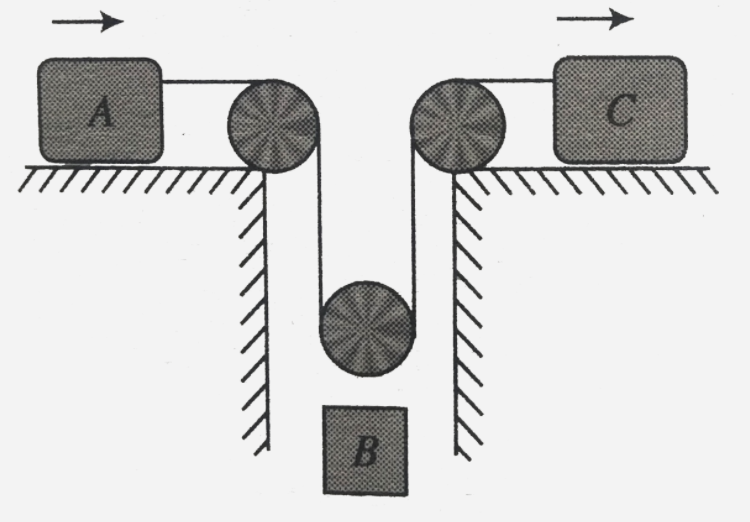In equation p=13αv2rms, the term (prop) represents dencity of gas.
vrms=√3RTM.
If both Assertion and Reason are true and the reason is correct explanation of the Assertion.
If both Assertion and Reason are true but Reason is not the correct explanation of Assertion.
If Assertion is true, but the Reason is false.
If Assertion is false but the Reason is true.
The correct Answer is:B
To solve the problem step by step, we will analyze the given equation and the relationships between the variables involved.
Step 1: Understand the given equation
The equation given is:
P=13αv2rms
where P is the pressure, α represents the density of the gas, and vrms is the root mean square velocity of gas molecules.
Step 2: Express vrms
We are given that:
vrms=√3RTM
where R is the universal gas constant, T is the temperature in Kelvin, and M is the molar mass of the gas.
Step 3: Substitute vrms into the equation
Now, we substitute vrms into the pressure equation:
P=13α(√3RTM)2
This simplifies to:
P=13α(3RTM)
Step 4: Simplify the equation
We can simplify further:
P=αRTM
Step 5: Relate density α to mass and volume
Using the ideal gas law, we know:
PV=nRT
where n is the number of moles. We can express n as:
n=mM
where m is the mass of the gas. Thus:
PV=mMRT
Rearranging gives us:
RTM=PVm
Step 6: Relate density to the equation
The density α can be expressed as:
α=mV
Substituting this into our equation gives:
P=αPVm
This shows that:
P=13αv2rms
is consistent with the definitions of pressure and density.
Conclusion
Thus, we have shown that the assertion P=13αv2rms is true, and the reason vrms=√3RTM is also true. However, the reason does not correctly explain the assertion, so the conclusion is that the assertion is true, and the reason is true but does not explain the assertion.
The equation given is:
P=13αv2rms
where P is the pressure, α represents the density of the gas, and vrms is the root mean square velocity of gas molecules.
We are given that:
vrms=√3RTM
where R is the universal gas constant, T is the temperature in Kelvin, and M is the molar mass of the gas.
Now, we substitute vrms into the pressure equation:
P=13α(√3RTM)2
This simplifies to:
P=13α(3RTM)
We can simplify further:
P=αRTM
Using the ideal gas law, we know:
PV=nRT
where n is the number of moles. We can express n as:
n=mM
where m is the mass of the gas. Thus:
PV=mMRT
Rearranging gives us:
RTM=PVm
The density α can be expressed as:
α=mV
Substituting this into our equation gives:
P=αPVm
This shows that:
P=13αv2rms
is consistent with the definitions of pressure and density.
Thus, we have shown that the assertion P=13αv2rms is true, and the reason vrms=√3RTM is also true. However, the reason does not correctly explain the assertion, so the conclusion is that the assertion is true, and the reason is true but does not explain the assertion.
Topper's Solved these Questions
- THERMOMETRY,THERMAL EXPANSION & KINETIC THEORY OF GASESBOOK - DC PANDEY ENGLISHCHAPTER - THERMOMETRY,THERMAL EXPANSION & KINETIC THEORY OF GASESEXERCISE - Level 1 Objective
10 Videos
- THERMOMETRY,THERMAL EXPANSION & KINETIC THEORY OF GASESBOOK - DC PANDEY ENGLISHCHAPTER - THERMOMETRY,THERMAL EXPANSION & KINETIC THEORY OF GASESEXERCISE - Level 1 Subjective
48 Videos
- THERMOMETRY,THERMAL EXPANSION & KINETIC THEORY OF GASESBOOK - DC PANDEY ENGLISHCHAPTER - THERMOMETRY,THERMAL EXPANSION & KINETIC THEORY OF GASESEXERCISE - Exercise 20.5
7 Videos
- THERMOMETRY THERMAL EXPANSION AND KINETIC THEORY OF GASESBOOK - DC PANDEY ENGLISHCHAPTER - THERMOMETRY THERMAL EXPANSION AND KINETIC THEORY OF GASESEXERCISE - Medical entrance gallary
30 Videos
- UNIT AND DIMENSIONSBOOK - DC PANDEY ENGLISHCHAPTER - UNIT AND DIMENSIONSEXERCISE - Assertion And Reason
2 Videos
Similar Questions
Knowledge Check
If s=t+√r3q, what is the value of r in terms of q, s and t ?
A3√qs2−qtB3√s2−2st−t2qC3√qs2−2qst+qt2D√qs2+2qst−t23
Blocks P and R starts from rest and moves to the right with acceleration ap=12tm/s2andaR=3m/s2. Here t is in seconds . The time when block Q again comes to rest is

View SolutionThe R.M.S. speed of oxygen molecules at temperature T (in kelvin) is v m s−1. As the temperature becomes 4T and the oxygen gas dissociates into atomic oxygen, then the speed of atomic oxygen
View SolutionLet TrandSr be the rth term and sum up to rth term of a series, respectively. If for an odd number n,Sn=nandTn=Tn−1n2,thenTm (m being even)is 21+m2 b. 2m21+m2 c. (m+1)22+(m+1)2 d. 2(m+1)21+(m+1)2
View SolutionTwo poles are a metres apart and the height of one is double of the other. If from the middle point of the line joining their feet an observer finds the angular elevations of their tops to be complementary, then the height of the smaller is (a)√2ametres (b)a2√2metres (c)a√2metres (d)2ametres
View SolutionIf in an A.P., Sn=n2p and Sm=m2p , where Sr denotes the sum of r terms of the A.P., then Sp is equal to 12p3 (b) mn p (c) p3 (d) (m+n)p2
View SolutionA charged particle enters a uniform magnetic field with velocity v0=4m/s perpendicular to it, the length of magnetic field is x=(√32)R, where R is the radius of the circular path of the particle in the field. Find the magnitude of charge in velocity (in m/s) of the particle when it comes out of the field.
View SolutionIf 2r=sand24t=3s, what is the r in terms of t?
View Solution
